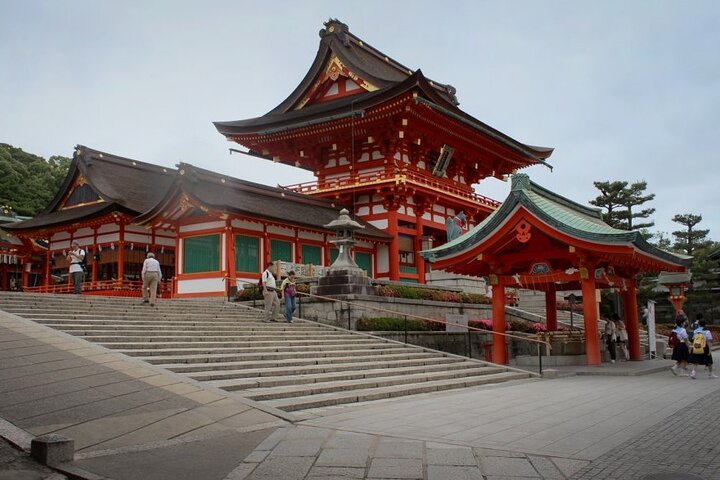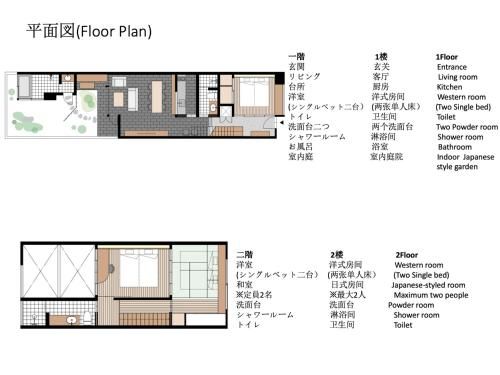Why choose this Kyoto tour ?
Private & Custom KYOTO walking tour allows you to “Tailor Your Itinerary” to fit your specific travel expectations. You have your own private English speaking Travel Companion for approximately 8 hours. Our team assists you to draft itinerary, prepare tickets, book restaurants/local experiences, take pictures, communicate with local vendors, direct you to the destinations, keep time, assist you throughout the trip and more!
STEP1: Please select your favorite destinations from “What to Expect” and share with us your other special requests
STEP2: Our team draft your tentative custom itinerary and share with you
STEP3: We revise/finalize the itinerary base on your feedback
STEP4: Let’s explore KYOTO
REMARKS
A. You can always make change to the itinerary even while traveling. The tour is flexible to your own needs and goals.
B. Extra charges will be applied for over time service
Make the most of your Kyoto adventure
What makes Private & Custom KYOTO Walking Tour – your Travel Companion a unique experience ?
Visit Kinkakuji Temple – The Golden Pavilion – a Zen Temple which was a retirement villa of the Shogun Ashikaga Yoshimitsu.
Visit Kiyomizudera – Pure Water Temple – is best known for its wooden stage that just out from its main hall, 13 meters above the hill side below. The main hall which together with the stage as built without the use of nails , house the temple’s primary object of worship, a small statue of the eleven faced, thousand armed Kannon. In 1944, the temple was added to the list of UNESCO World Heritage Site.
Visit Sanneizaka and Ninenzaka preserved districts.
Visit Yasaka Shrine (Gion Shrine) which is well known for its summer festival (the Gion Matsuri) which is celebrated every July. Gion Matsuri is the most famous festival in the whole country.
Visit Fushimi Inari Shrine – the Ultimate Torii Gate Experience – an important Shinto shrine famous for its thousand of vermillion Torrid fates which straddle a network of trails behind its main building.
Visit Arashiyama – the second most sightseeing district in Kyoto since Heian Period filled with temples, shrines and bamboo gives.
1. Bamboo Forest
2. Tenryuji Temple – Kyoto’s five Zen Temples founded in 1339. UNESCO World Heritage Site.
3. Togetsu Bridge – Moon crossing bridge – built during the Heian Period reconstructed recently in 1930s
Visit Nishiki Ichibe – a narrow, five block long shopping street lined bemire than one hundred shops and restaurants known as Kyoto’s kitchen.
Visit Gion – Kyoto’s famous geisha district
Visit Ginkakuji – the Silver Pavilion – built by Yoshimitsu’s grandson, Ashikaga Yoshima, on the other side of the City a few decades after Kinkakuji.
Sanjusangendo (三十三間堂, Sanjūsangendō) is the popular name for Rengeo-in, a temple in eastern Kyoto which is famous for its 1001 statues of Kannon, the goddess of mercy. The temple was founded in 1164 and rebuilt a century later after the original structure had been destroyed in a fire.
Measuring 120 meters, the temple hall is Japan’s longest wooden structure. The name Sanjusangendo (literally “33 intervals”) derives from the number of intervals between the building’s support columns, a traditional method of measuring the size of a building. In the center of the main hall sits a large, wooden statue of a 1000-armed Kannon (Senju Kannon) that is flanked on each side by 500 statues of human sized 1000-armed Kannon standing in ten rows. Together they make for an awesome sight.
The Kyoto Imperial Palace (京都御所, Kyōto Gosho) used to be the residence of Japan’s Imperial Family until 1868, when the emperor and capital were moved from Kyoto to Tokyo. It is located in the spacious Kyoto Imperial Park (京都御苑, Kyōto Gyoen), an attractive park in the center of the city that also encompasses the Sento Imperial Palace and a few other attractions.
Nijo Castle (二条城, Nijōjō) was built in 1603 as the Kyoto residence of Tokugawa Ieyasu, the first shogun of the Edo Period (1603-1867). His grandson Iemitsu completed the castle’s palace buildings 23 years later and further expanded the castle by adding a five story castle keep.
Eikando (永観堂, Eikandō), formally known as Zenrinji Temple, belongs to the Jodo sect of Japanese Buddhism. Located just north of the large temple complex of Nanzenji, Eikando is very famous for its autumn colors and the evening illuminations that take place in fall. The temple has a long history, and there are a variety of buildings and a pond garden that visitors can explore.
A court noble of the Heian Period (710-1185) donated his villa to a priest, who converted it into a temple under the name Zenrinji (lit. “temple in a calm grove”). At its founding, Zenrinji was part of the Shingon sect and its first head priest was a disciple of the great Kobo Daishi, the sect’s founder.
Tour Description & Additional Info:
- Wheelchair accessible
- Infants and small children can ride in a pram or stroller
- Public transportation options are available nearby
- Infants are required to sit on an adult’s lap
- Suitable for all physical fitness levels
Options To Choose for Your Trip:
- Private & Custom KYOTO Walking Tour – your Travel Companion
Add
Pickup included
Private & Custom KYOTO Walking Tour – your Travel Companion Inclusions:
Included with Your Ticket
- Assistants throughout your Trip
- A Travel Companion
- Personalized Itinerary
- Entrance Fees
- Accommodation Fees
- Meals (Breakfast, Lunch, Dinner…)
Trending Kyoto Nearby Tours Likely To Sell Out
Special Instructions:
- This Tour is Provided by Japan Private Tours.
- Tour Timezone & Starts at Asia/Tokyo.
- Mobile or paper ticket accepted.
- All sales are final. No refund is available for cancellations.
- This Tour is Rated 3 Stars based on 22 valid reviews on VIATOR.
- Minimum 1 Travelers is required to book.
- Maximum 5 Travelers is accepted for booking.










